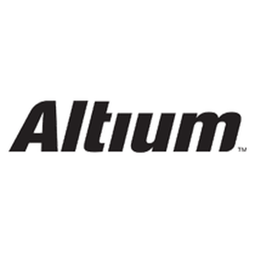下载PDF
Developing Cutting-Edge Wireless Technology with NuCurrent and Altium Concord Pro
技术
- 应用基础设施与中间件 - 中间件、SDK 和库
- 网络与连接 - WiFi
适用行业
- 电子产品
- 电信
适用功能
- 产品研发
用例
- 服务备件管理
服务
- 硬件设计与工程服务
- 系统集成
挑战
NuCurrent 是一家专门从事无线感应技术的公司,随着客户名单的增长,需要专业的 PCB 元件库管理和版本控制解决方案。
关于客户
NuCurrent 帮助公司为创新产品实施无线充电子系统。他们弥合了想法和可能性之间的差距,与公司合作,无论他们对开发过程的熟悉程度或进展如何。
解决方案
NuCurrent 实施了 Altium Concord Pro,这是一种简化部件管理并提供简单版本控制的解决方案。
运营影响
数量效益
相关案例.

Case Study
Remote Temperature Monitoring of Perishable Goods Saves Money
RMONI was facing temperature monitoring challenges in a cold chain business. A cold chain must be established and maintained to ensure goods have been properly refrigerated during every step of the process, making temperature monitoring a critical business function. Manual registration practice can be very costly, labor intensive and prone to mistakes.

Case Study
Cloud Solution for Energy Management Platform-Schneider Electric
Schneider Electric required a cloud solution for its energy management platform to manage high computational operations, which were essential for catering to client requirements. As the business involves storage and analysis of huge amounts of data, the company also needed a convenient and scalable storage solution to facilitate operations efficiently.

Case Study
Leveraging the IoT to Gain a Competitive Edge in International Competition
Many large manufacturers in and outside Japan are competing for larger market share in the same space, expecting a growing demand for projectors in the areas of entertainment, which requires glamor and strong visual performance as well as digital signage that can attract people’s attention. “It is becoming more and more difficult to differentiate ourselves with stand-alone hardware products,” says Kazuyuki Kitagawa, Director of Service & Support at Panasonic AVC Networks. “In order for Panasonic to grow market share and overall business, it is essential for us to develop solutions that deliver significant added value.” Panasonic believes projection failure and quality deterioration should never happen. This is what and has driven them to make their projectors IoT-enabled. More specifically, Panasonic has developed a system that collects data from projectors, visualizes detailed operational statuses, and predicts issues and address them before failure occurs. Their projectors are embedded with a variety of sensors that measure power supply, voltage, video input/ output signals, intake/exhaust air temperatures, cooling fan operations, and light bulb operating time. These sensors have been used to make the projector more intelligent, automatically suspending operation when the temperature rises excessively, and automatically switching light bulbs. Although this was a great first step, Panasonic projectors were still not equipped with any capability to send the data over a network.








